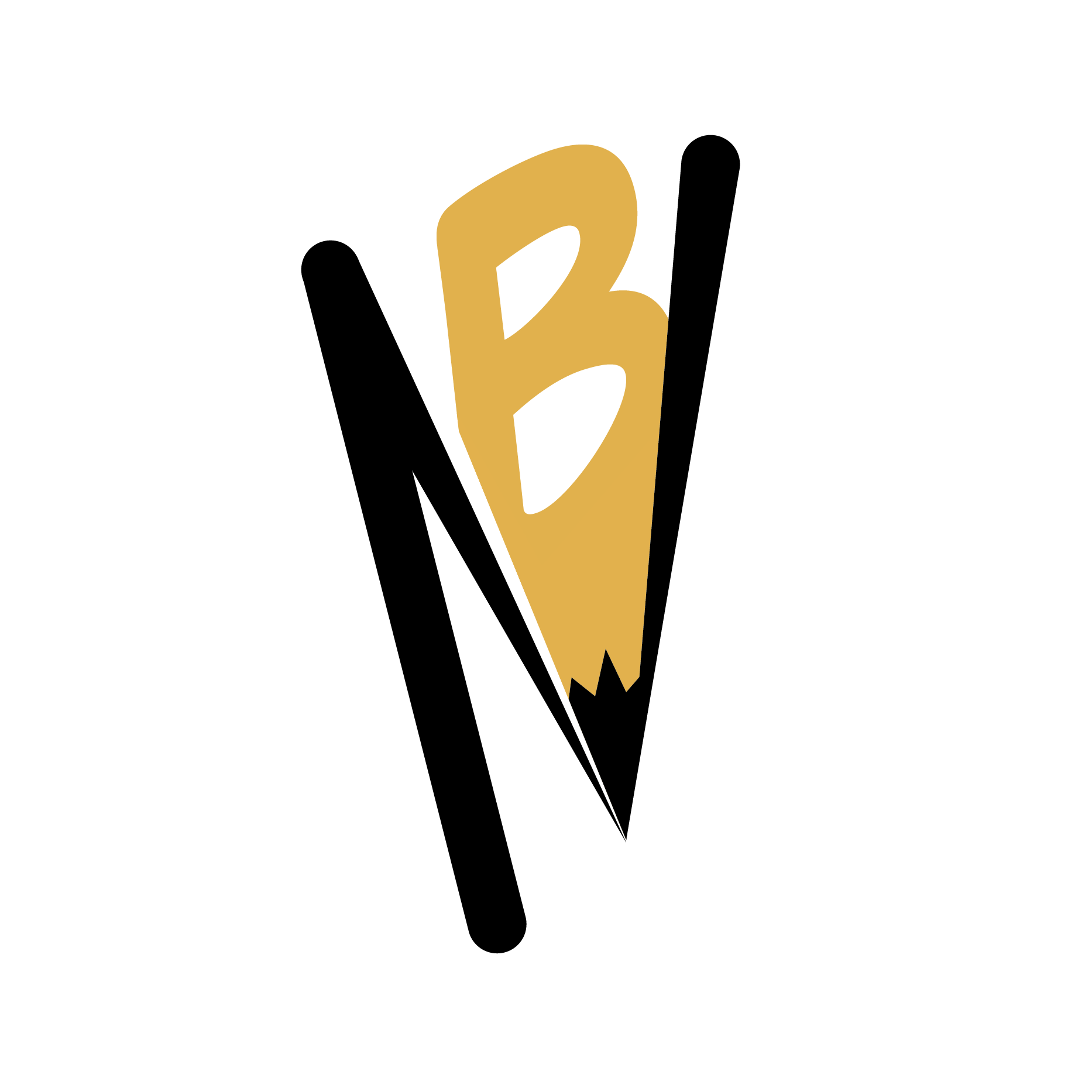Project description: Jackie Robinson: the history of baseball is a virtual reality experience designed for users that want to learn about the history of baseball and the life of Jackie Robinson. This is an interactive virtual environment, set in Jackie Robinson's home in which users can interact with historical artifacts that reveal information about his life, baseball career, and historical impact.
Designers: Nik Brannon, Megan Feeney, Delaney Brown, Jack Seal-Roth
Role: Virtual environment & 3D modeling
Onboarding: We used three signs in our onboarding room, one to inform users about our experience, and two others to encourage user interaction with our televisions and magazine. Users are encouraged to practice interactions in the onboarding room, to familiarize themselves with the interactions they will find in the experience.

Television interaction instructions
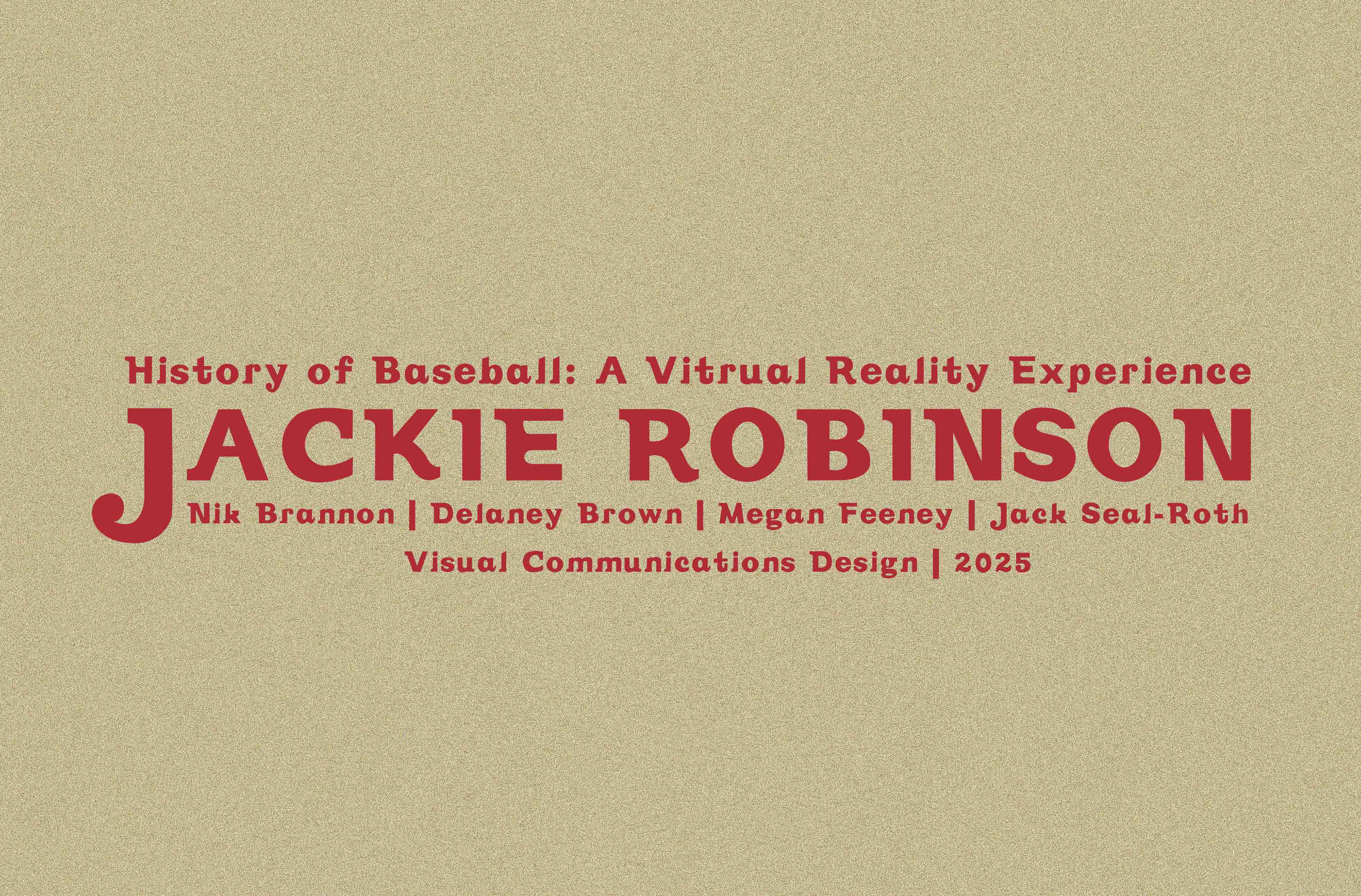
Introduction
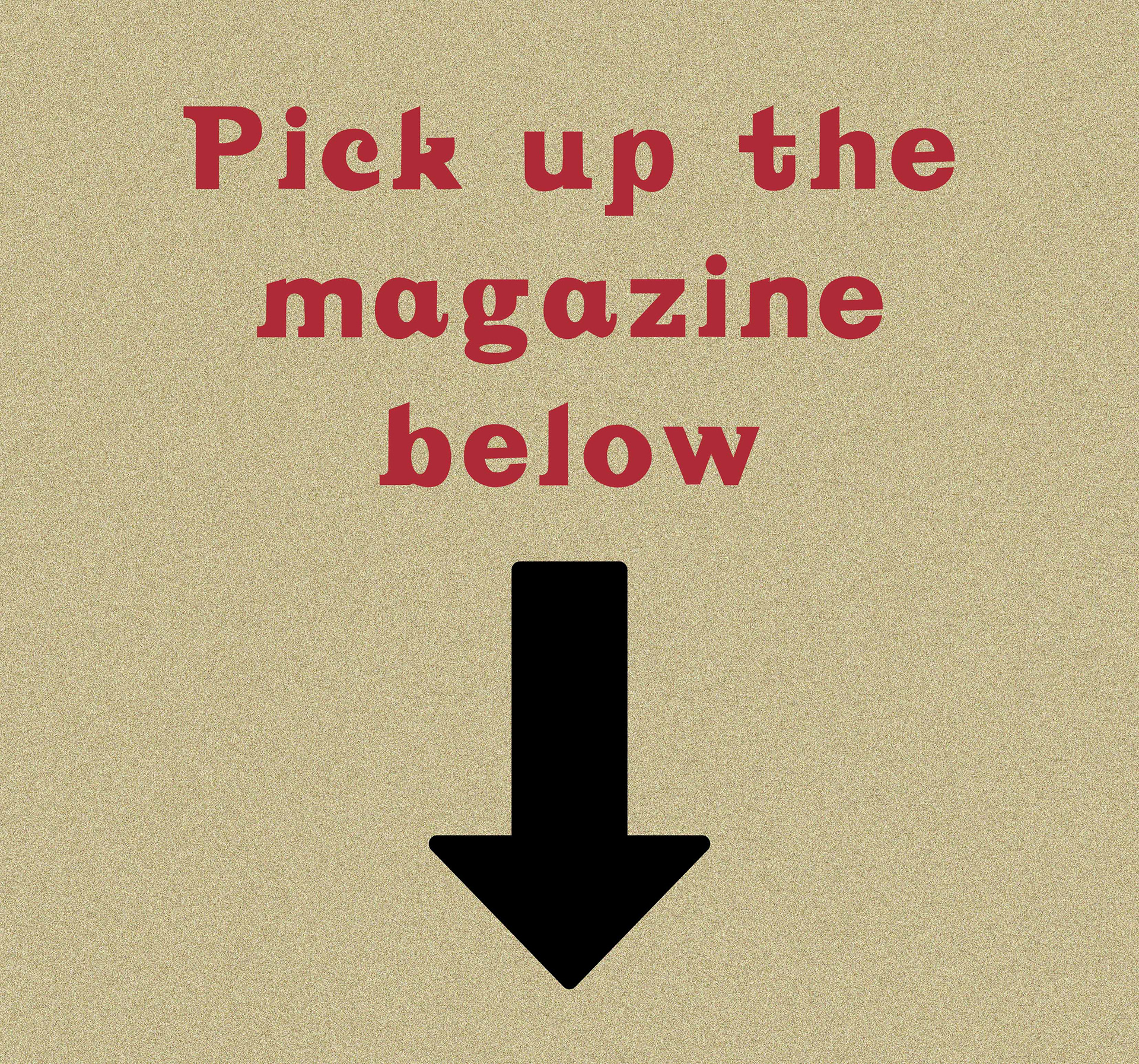
Magazine interaction instructions
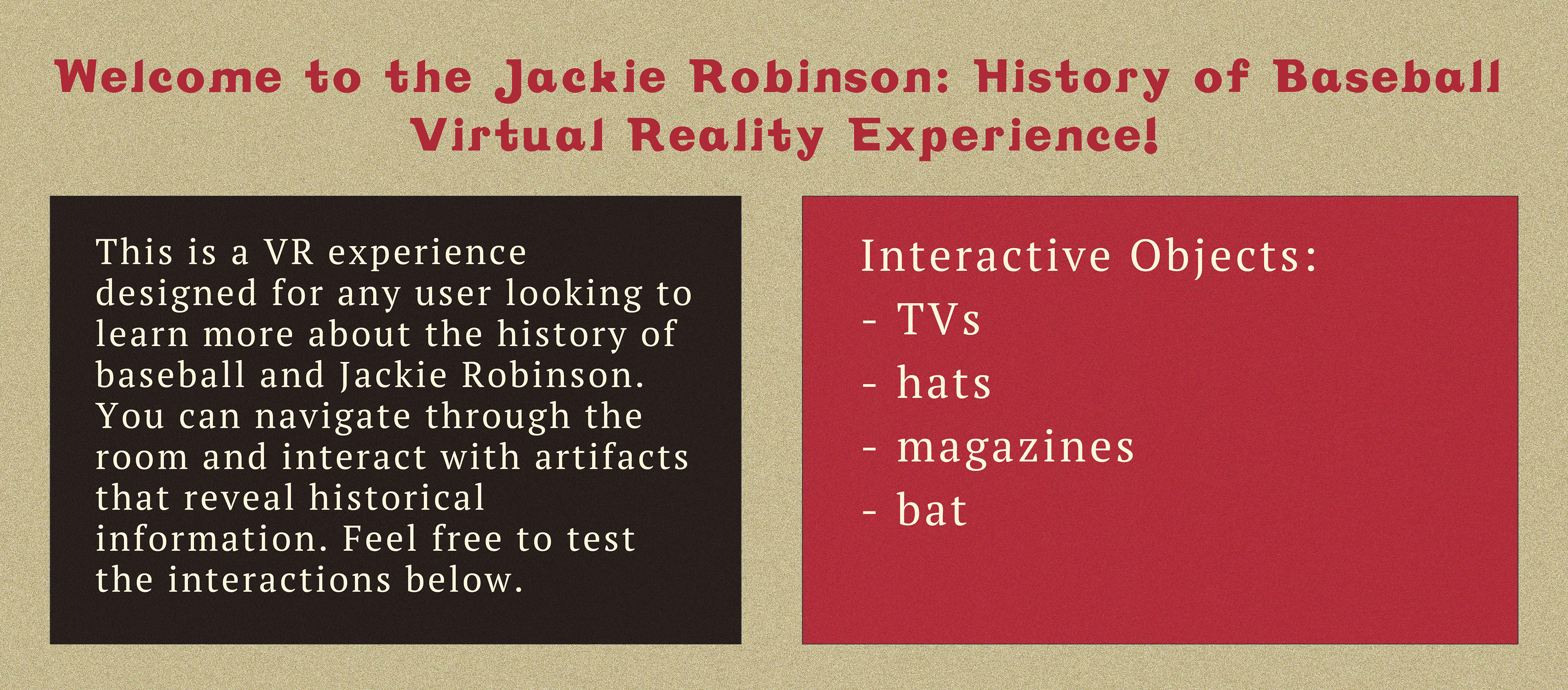
Onboarding
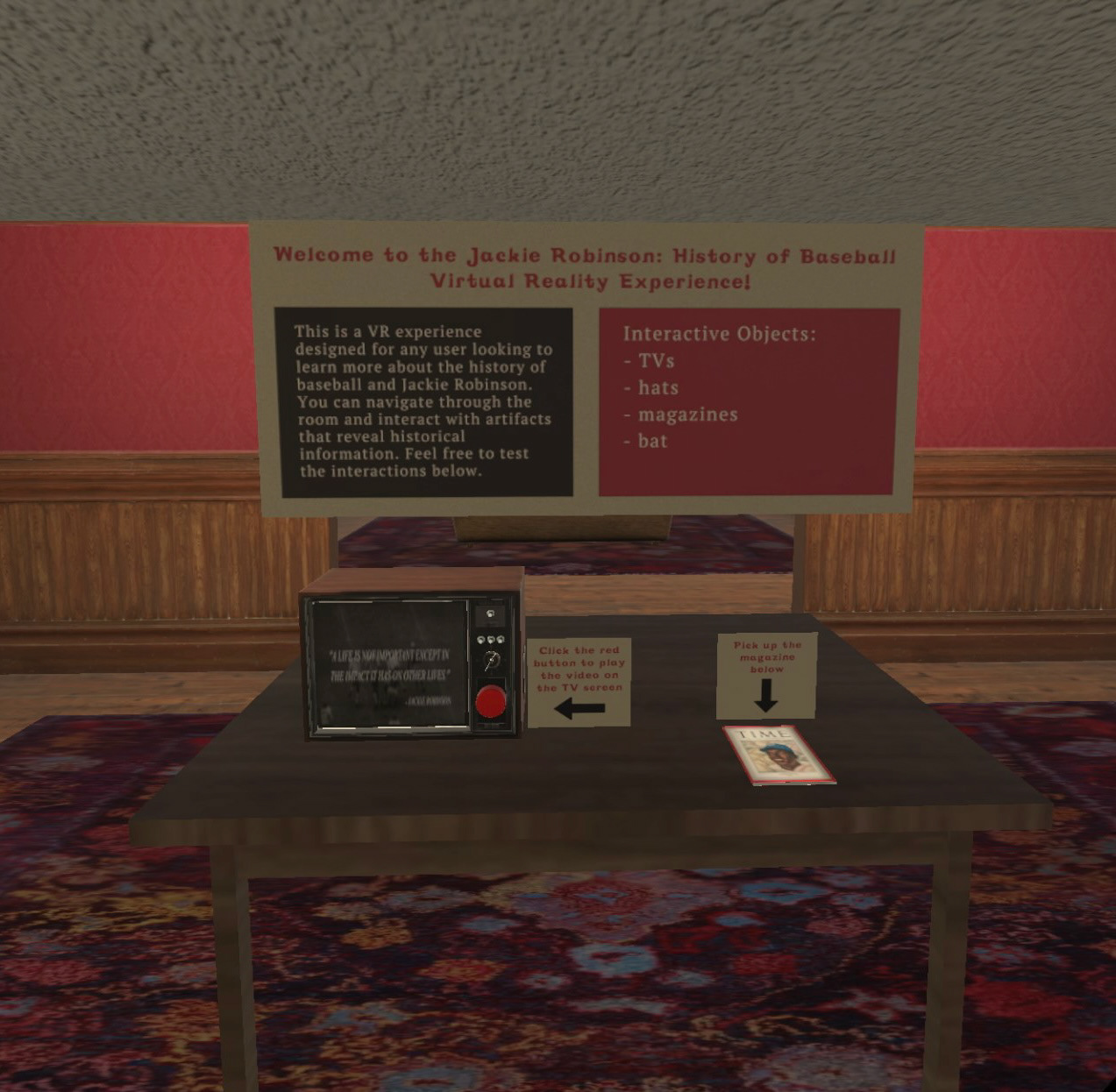
Onboarding experience
3D Models: We used a wide variety of 3D models from outside sources to successfully design artifacts for our virtual experience.
Jerseys: For our 3D modeled jerseys, we imported the files from CGTrader to depict a real baseball jersey. A team member accurately designed each specific baseball jersey that Jackie Robinson wore during his baseball career by customizing the UV map texture provided with the imported jersey file. Each of the jerseys were presented in the experience as a display, accompanied by interactive televisions that play videos describing Jackie's journey and impact with the specific team.
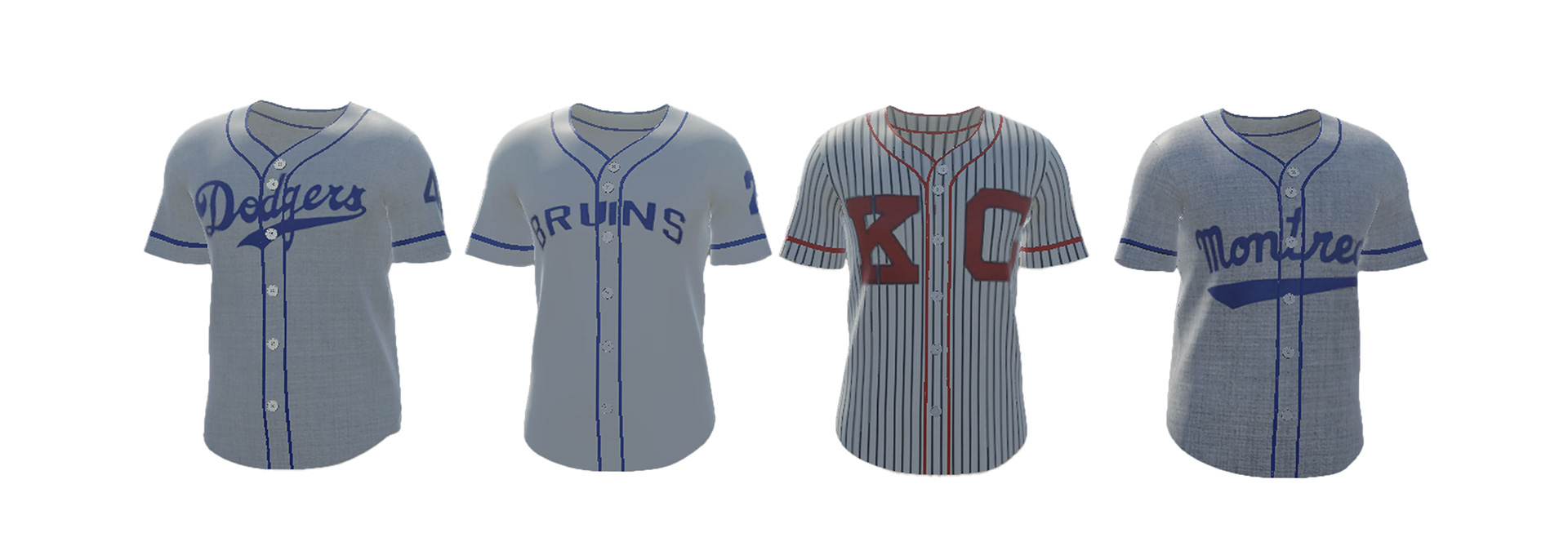
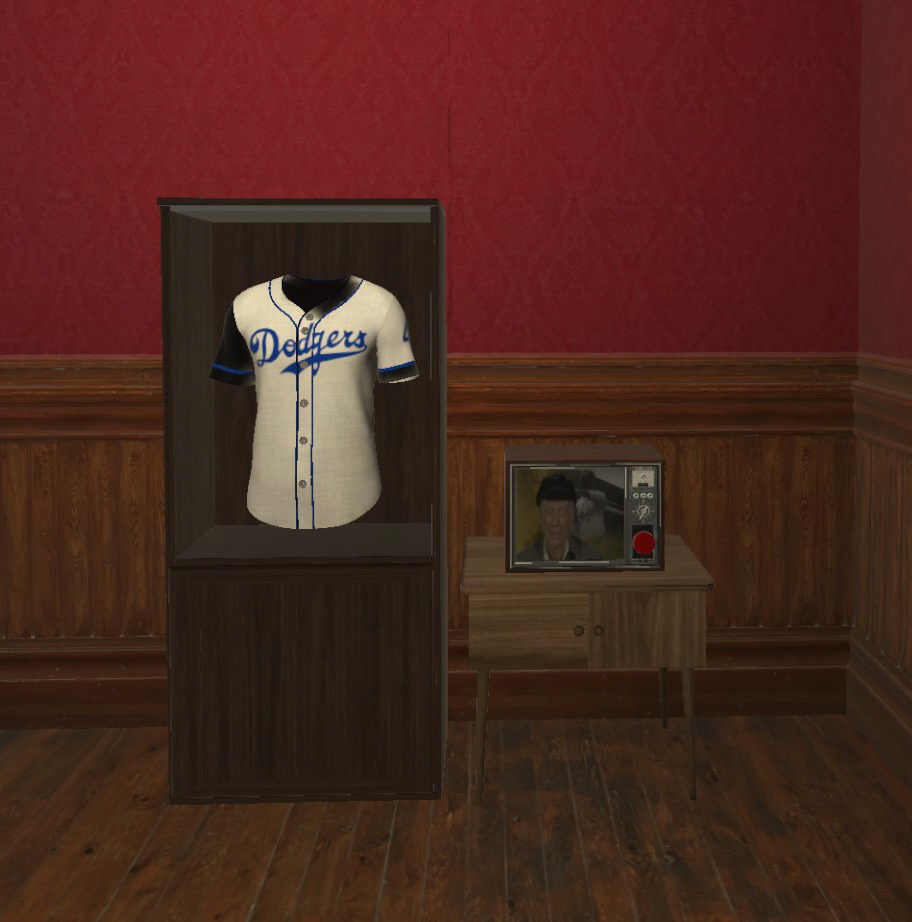
Los Angeles Dodgers
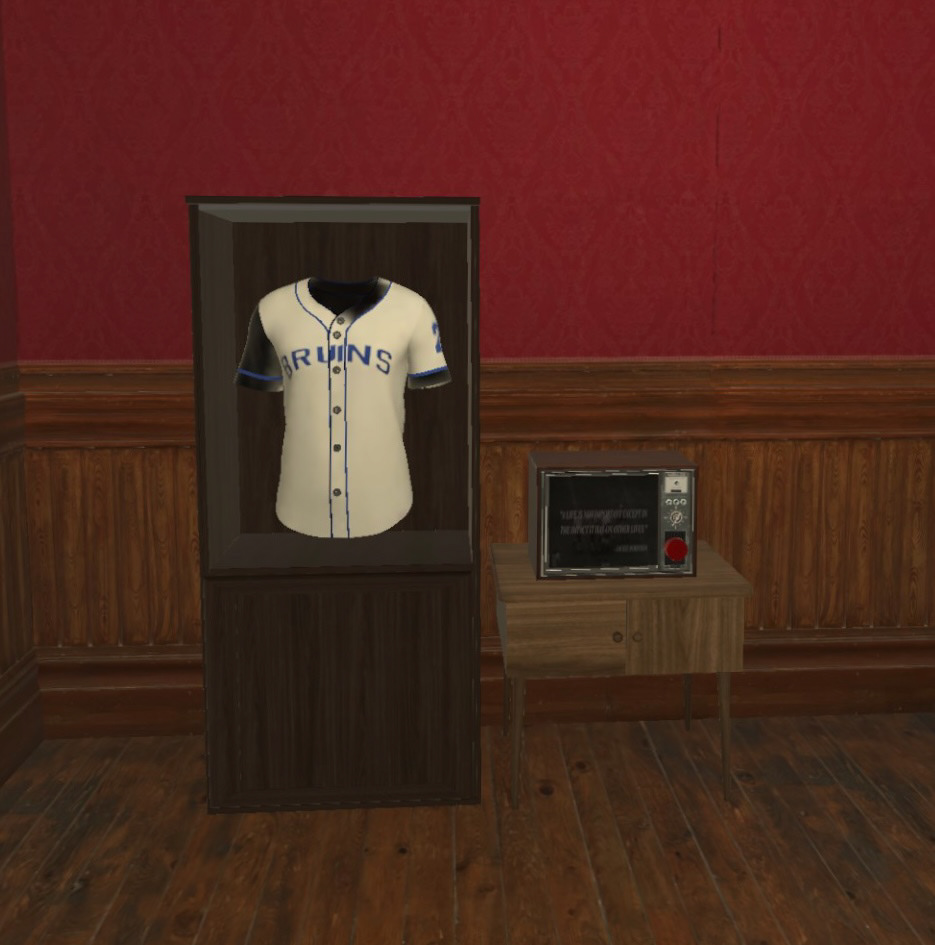
UCLA Bruins
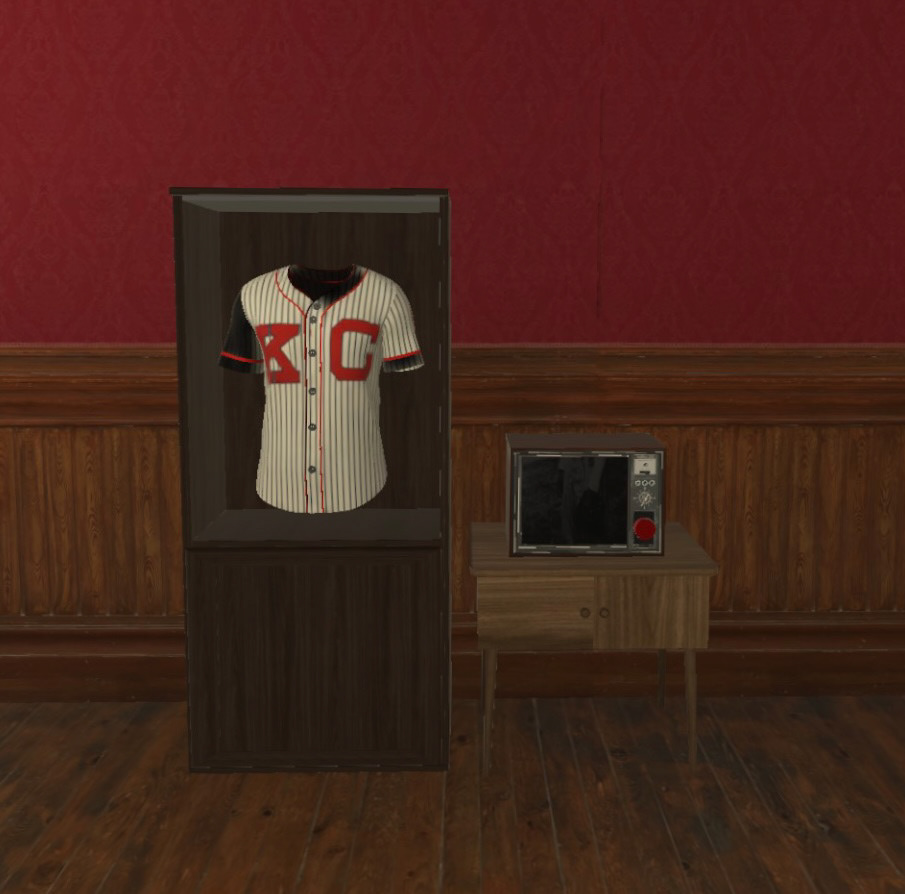
Kansas City Monarchs
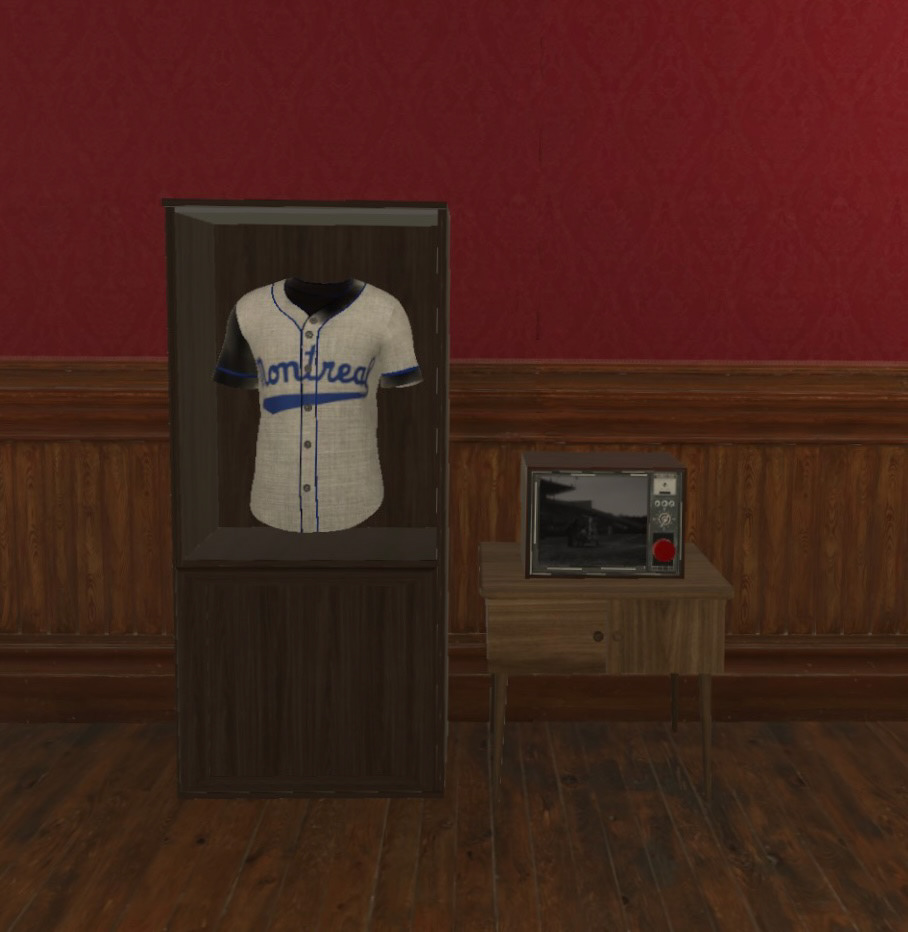
Montreal Royals
Plaques: On the opposite wall of the living room, we made a gallery wall with photos that encapsulate significant events throughout Jackie Robinson's life. Each of the photos are described on a small bronze plaque just beneath the pictures. A team member 3D modeled the plaques using the software Maya, and created the bronze texture using a UV map.
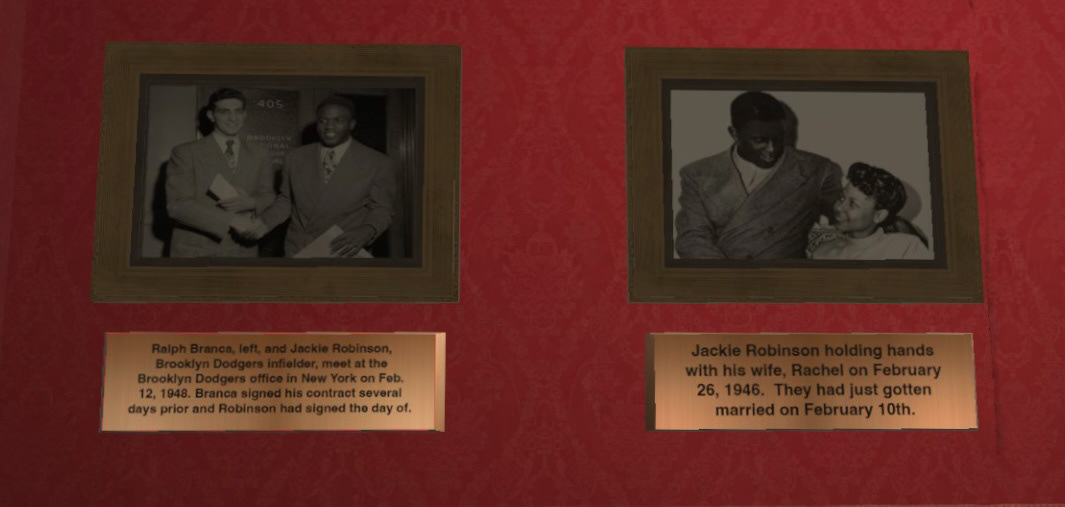
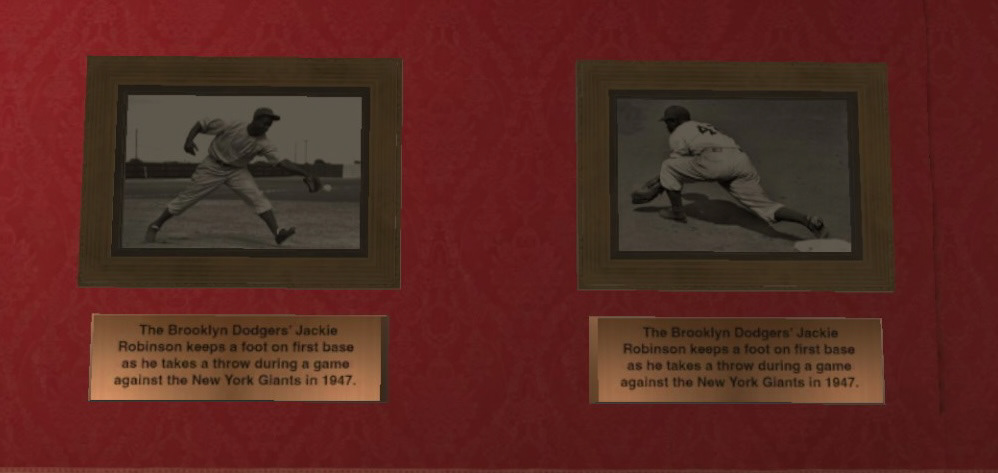
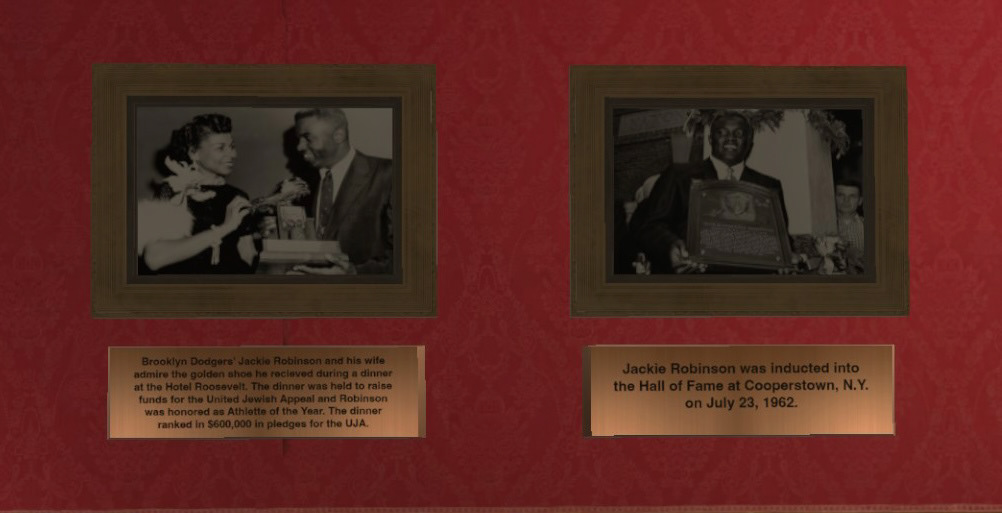
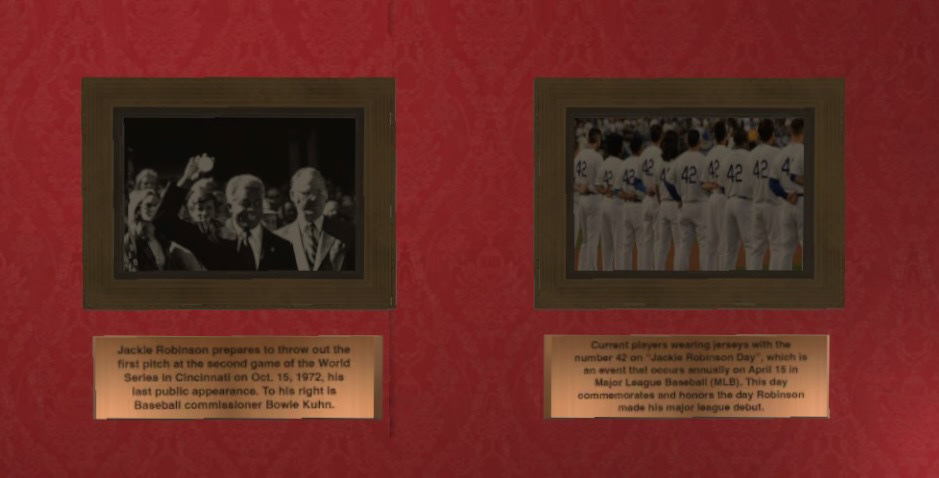
Interactive artifacts: Our virtual experience grants the ability for users to interact with and explore historical artifacts. They likely are not able to do so in real museums, which enhances our experience and provides a greater sense of immersion and presence. We incorporated interactions into hats, magazines, televisions, and a baseball bat. Users are able to pick up the hats, magazines and baseball bat, and they are also able to press a button to play a video with audio on the televisions.
Hats: Our hats were created using the same method as our jerseys. We used an imported model of a ball cap from CGTrader, and a team member customized the UV map provided with the file in Photoshop. When a user picks up the hat, an audio plays a sound of a historical moment from Jackie Robinson's career during his time with that team.
Bat: The baseball bat is also a file uploaded from CGTrader. We made the bat interactive by incorporating another audio of a historical event from Jackie Robinson's career when a user picks it up off of the mantle.
Televisions: The TV models were also imported from CGTrader. We sourced video clips from interviews and historical documentaries about Jackie Robinson, which are activated when a user clicks the red button next to the screen.
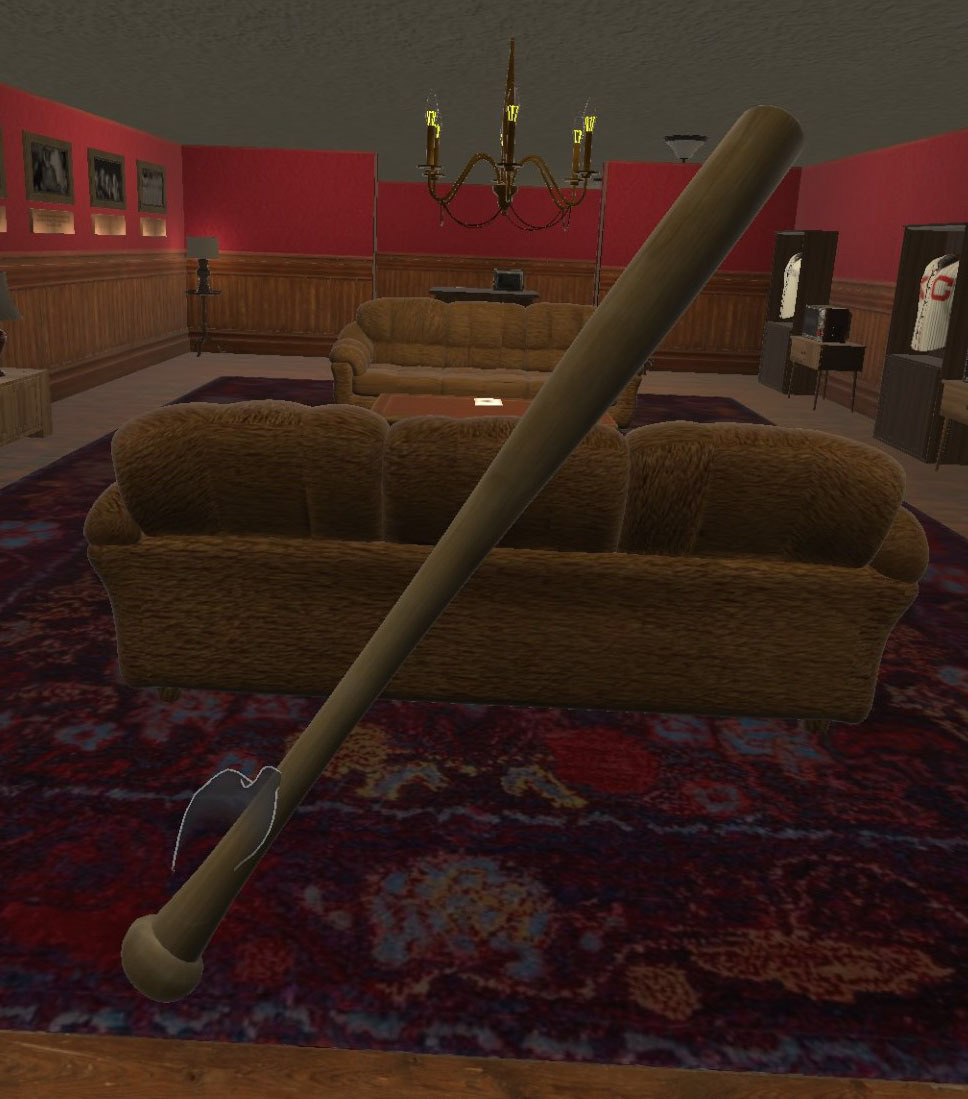
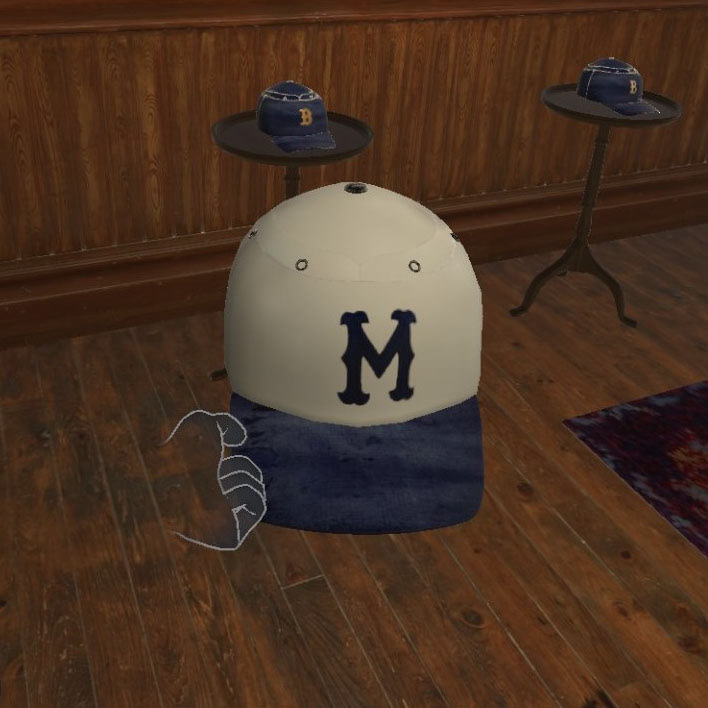
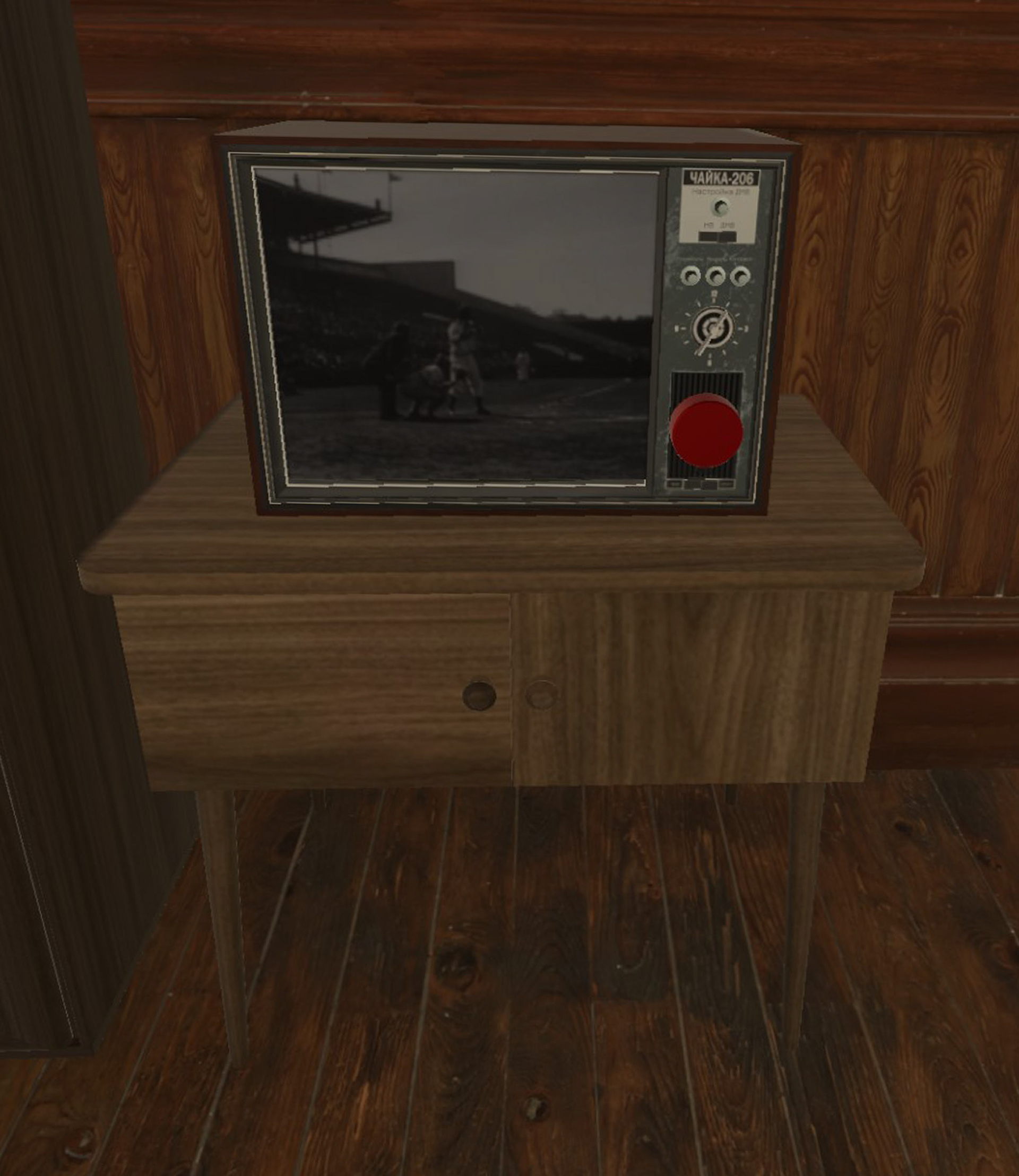
Virtual environment: Our virtual environment is inspired by Jackie Robinson's home in Brooklyn, New York. One of my roles in the project was to construct the general frame of the scene. I manipulated cubes and planes to accurately scale the room and tested the sizing of objects by importing test models and utilizing the headsets for perspectives. We weren't able to make an exact replica of Robinson's home because of limited resources and time, however the models and textures we used accurately depict common home styles of the 1940's.
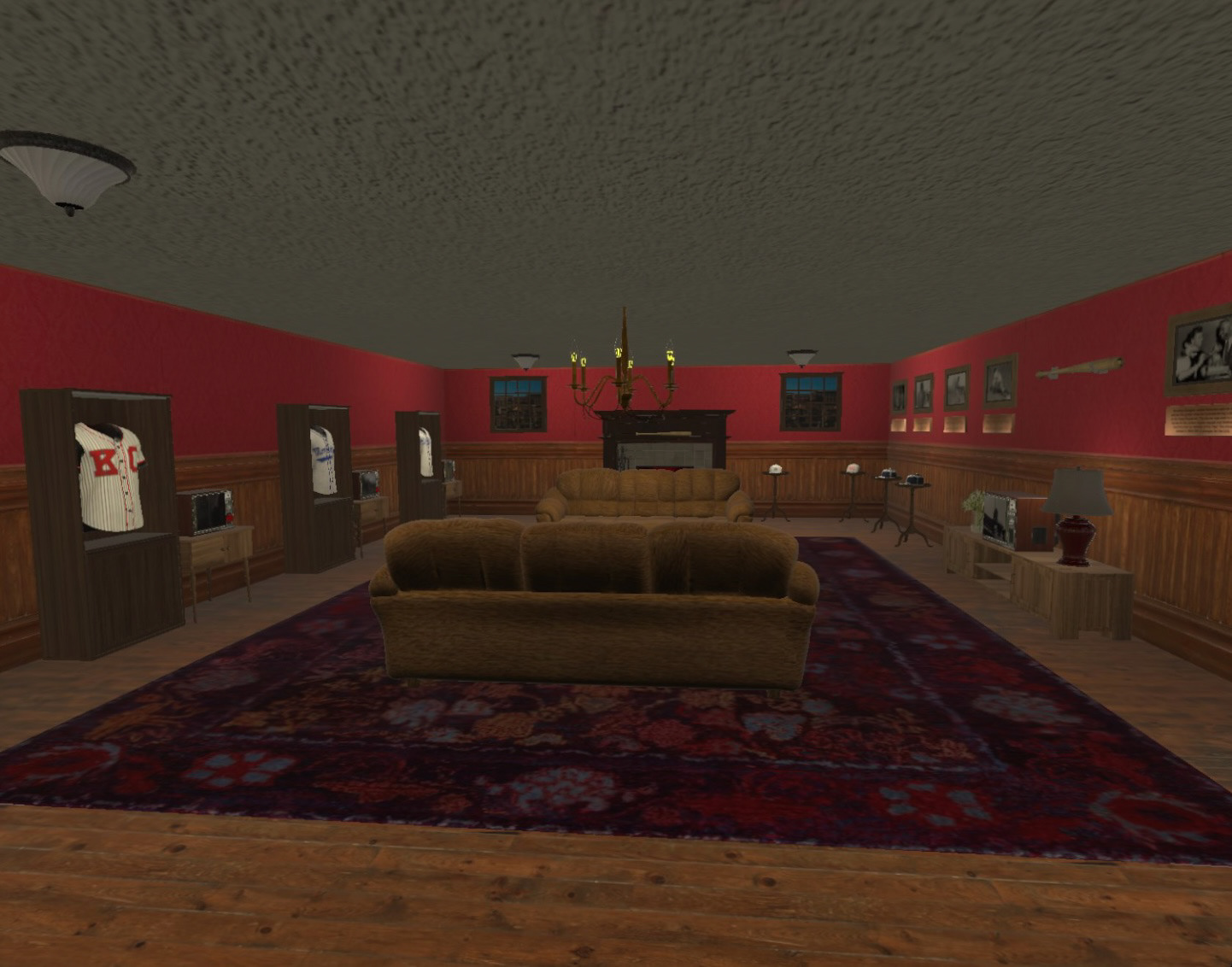
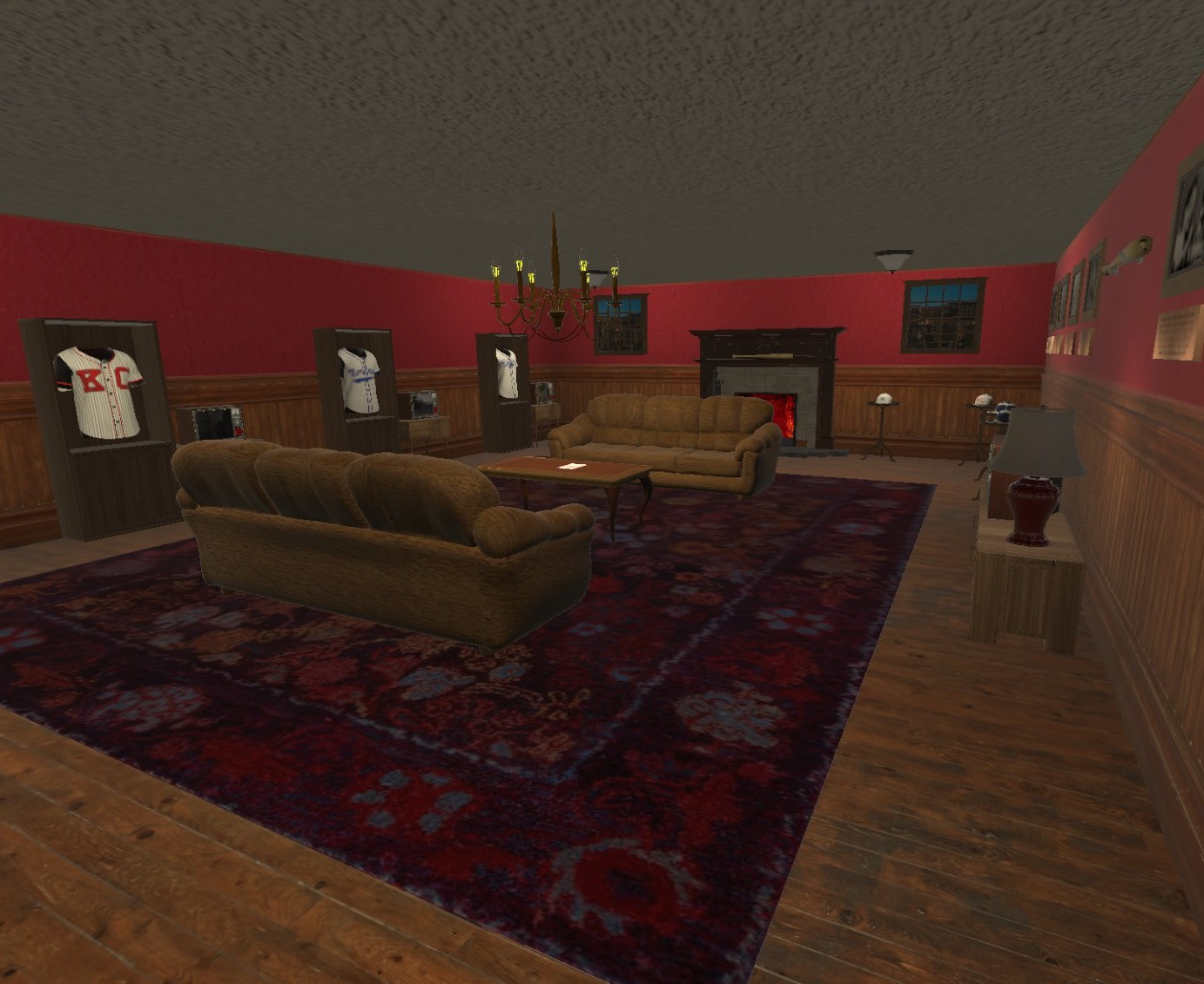
Challenges: The majority of our difficulties stemmed from a lack of familiarity with the programs and difficulties integrating interactions. In particular, we faced challenges in accurately implementing gravity and encountered issues with shading on the jersey sleeves. With assistance from Shadrick, Armarth, and tutorials, we successfully made adjustments and gained a better understanding of interactions, refining our approach for integration into our showroom. While some challenges remained unresolved, we managed to develop an interactive user experience and enhance our knowledge of design within the Unity Game Engine.
Reflection: A key lesson we gained from our project is realizing how virtual reality can offer effective ways for people to learn about history and engage with topics in ways that aren't always possible in person. Given more time, we'd aim for more intricate interactions, like flipping magazine pages, and create an environment that truly reflects Jackie Robinson's actual home instead of just capturing the time period. Future designers and developers could expand on our work by crafting a more comprehensive experience of Jackie Robinson's entire life, rather than just a small part, and by developing house museums for other influential baseball players or athletes.
